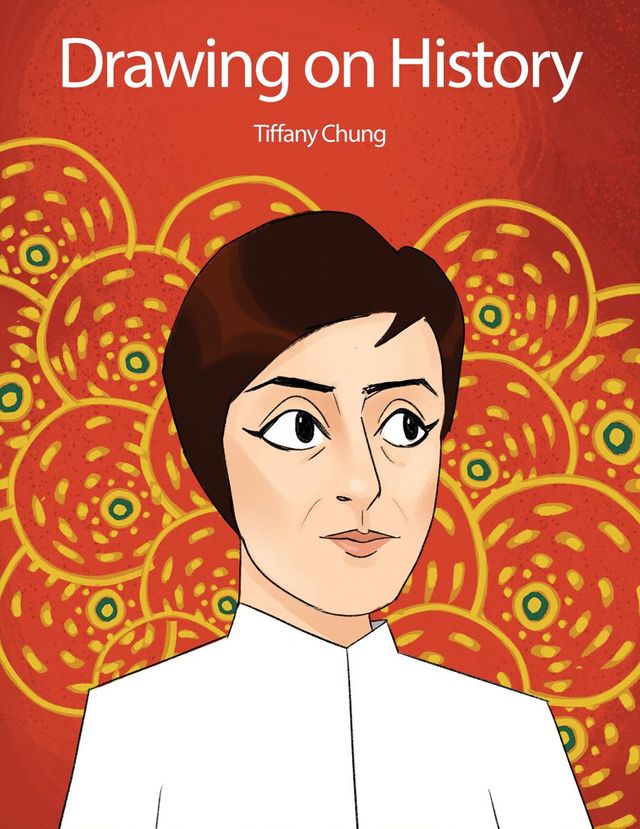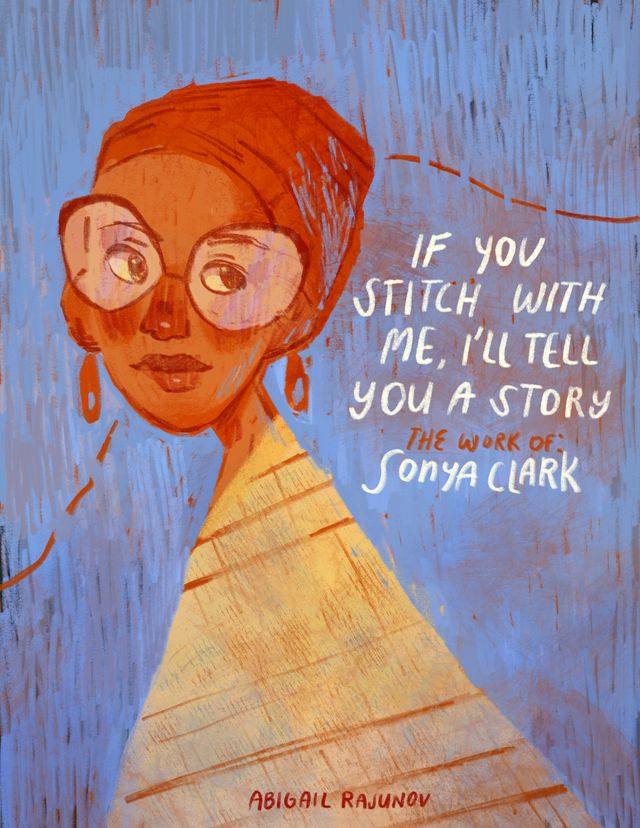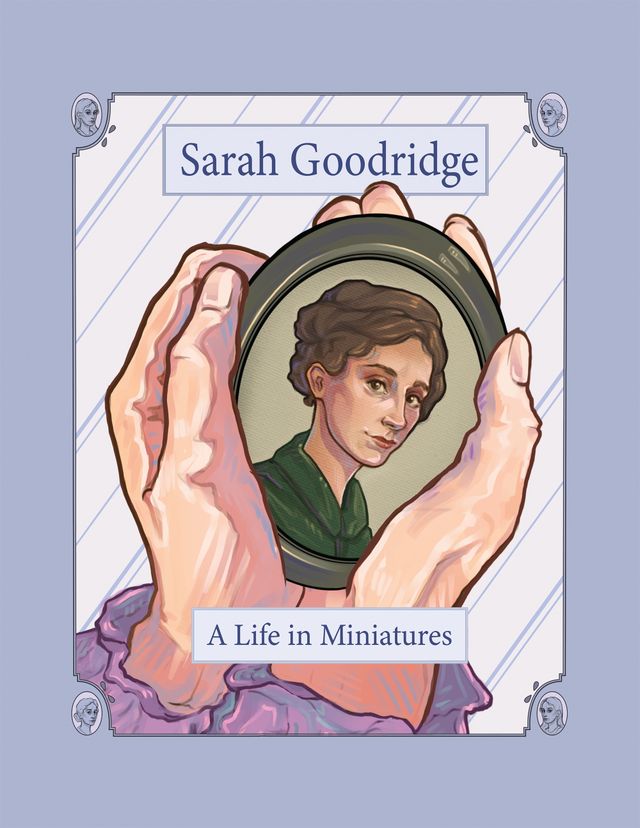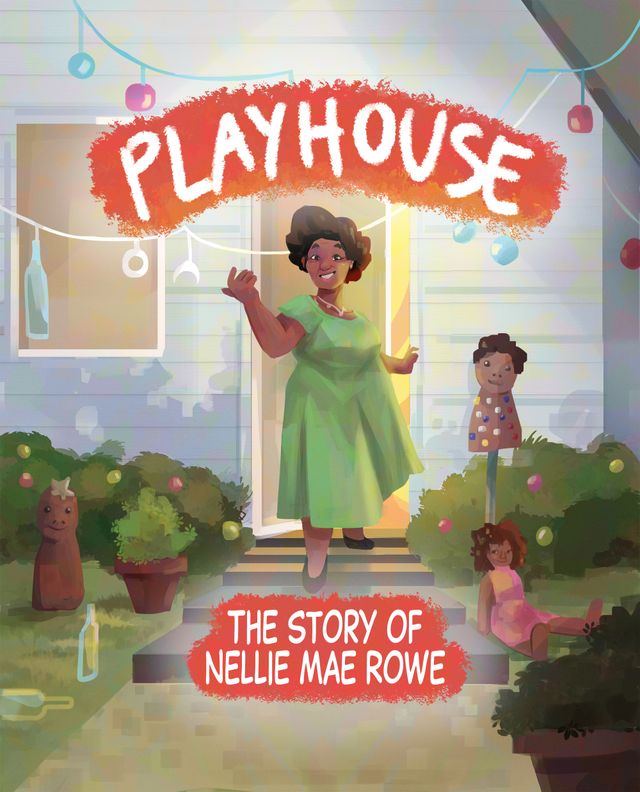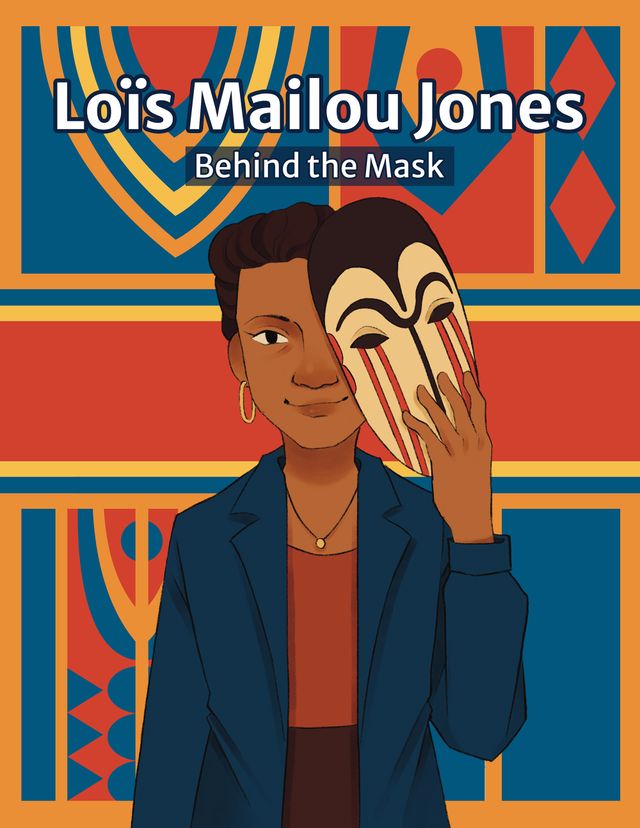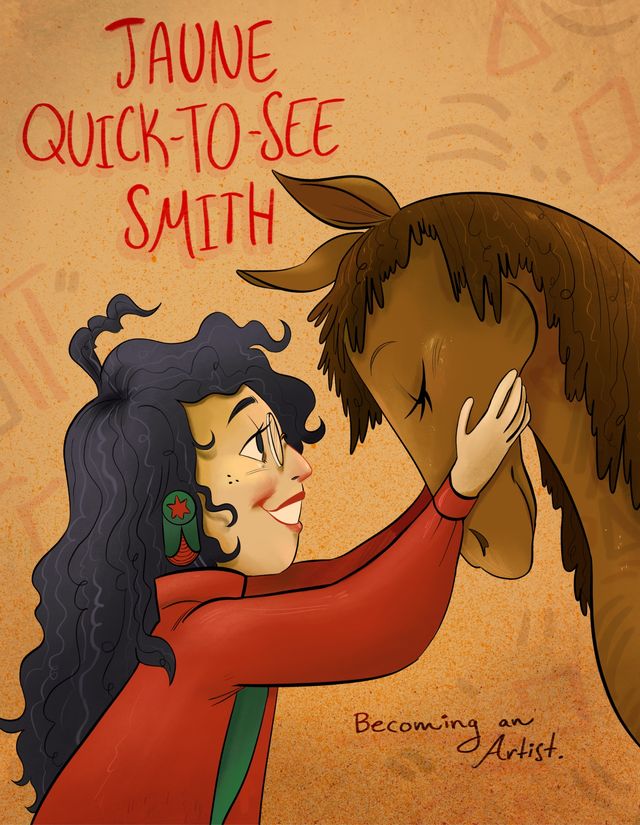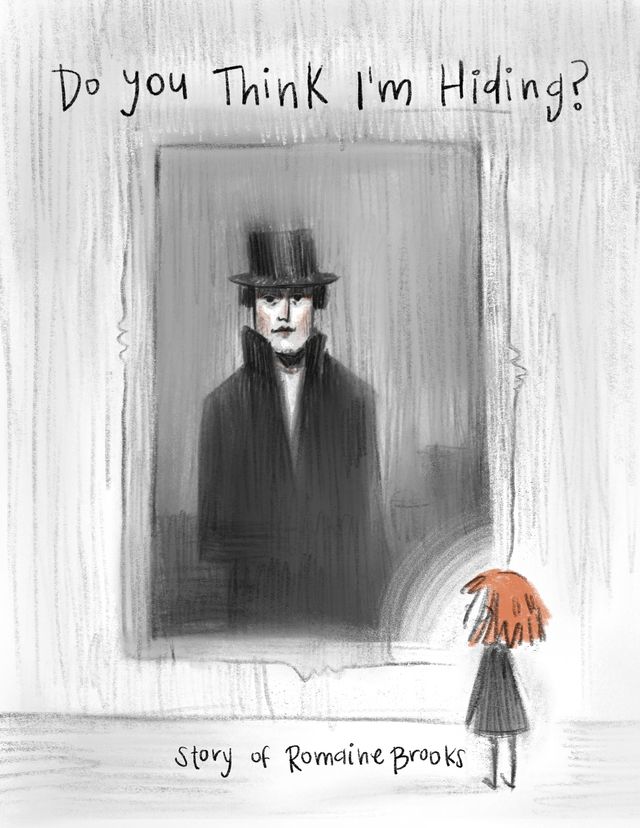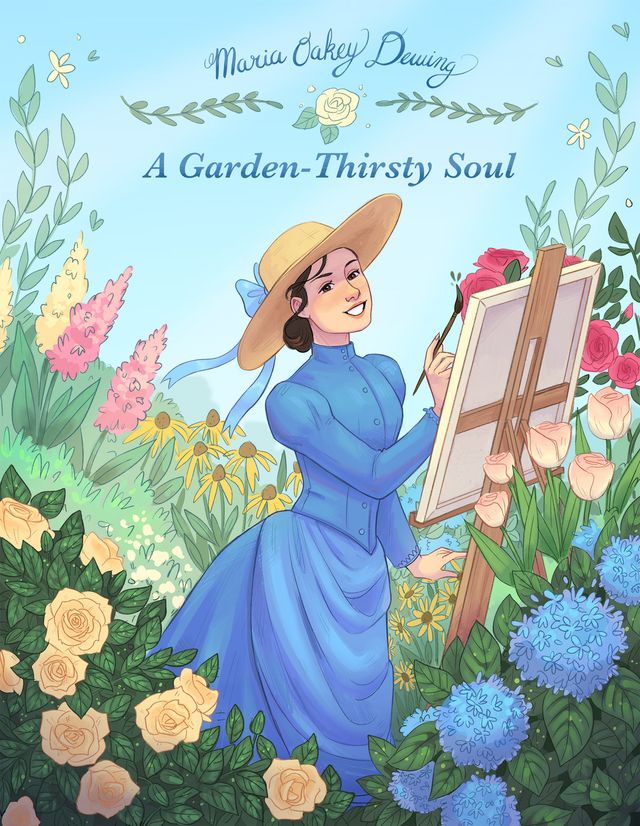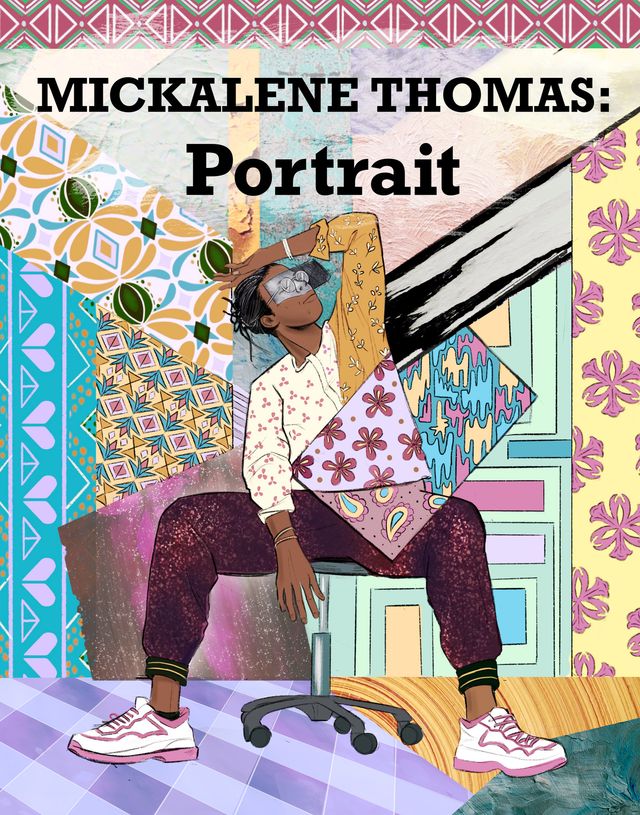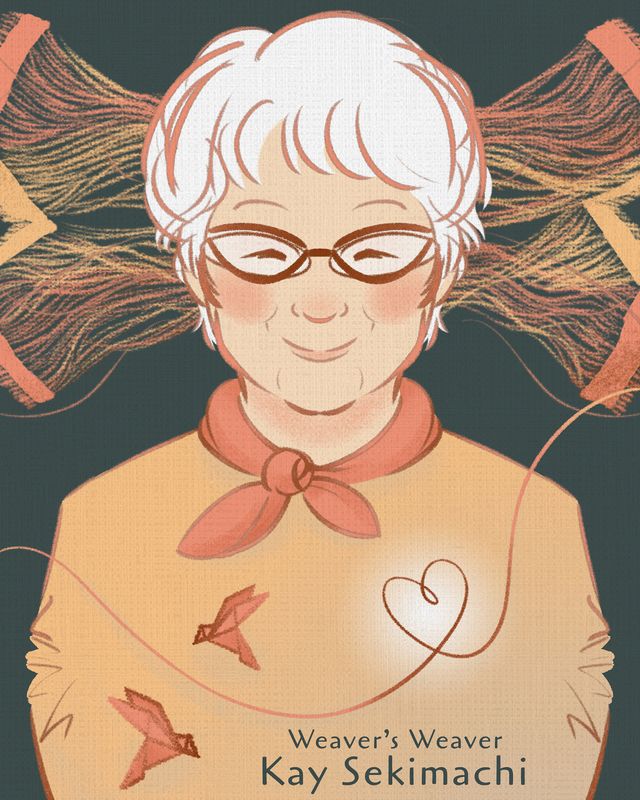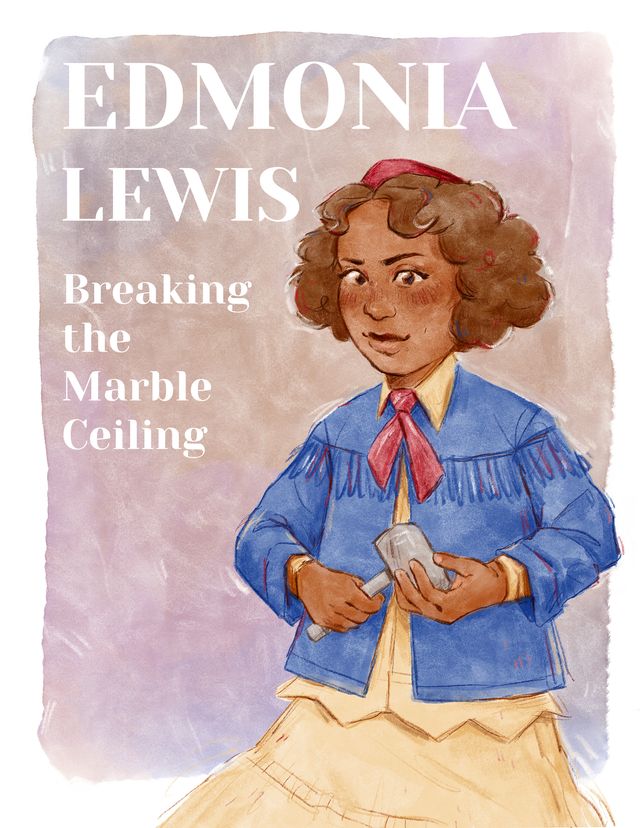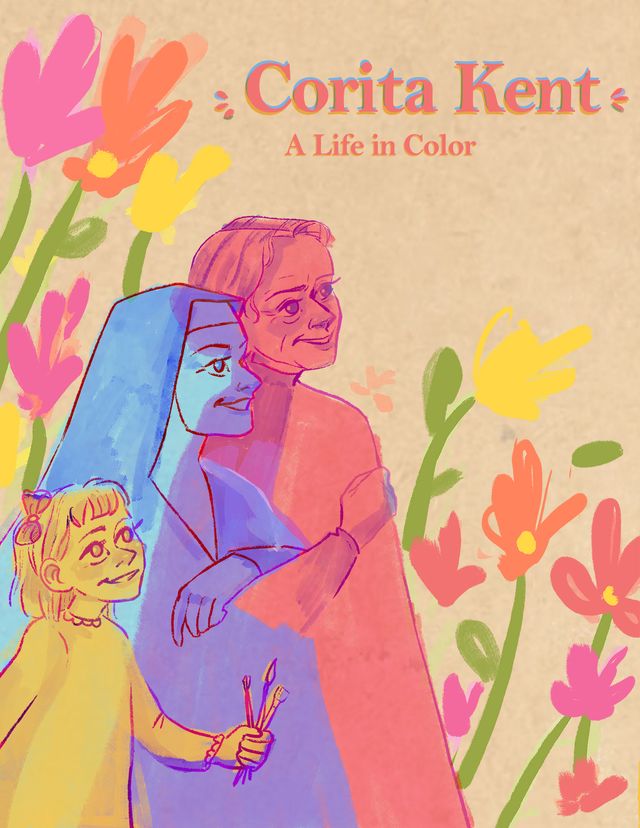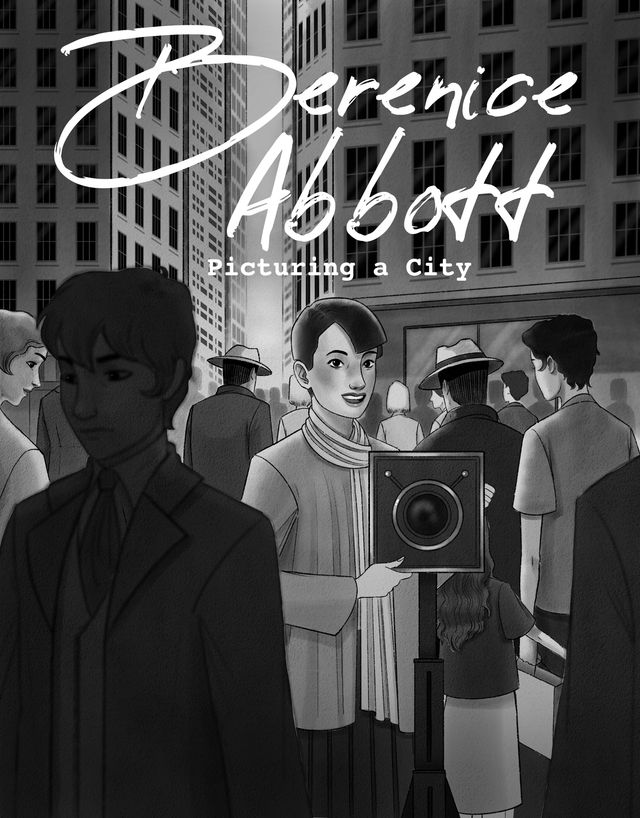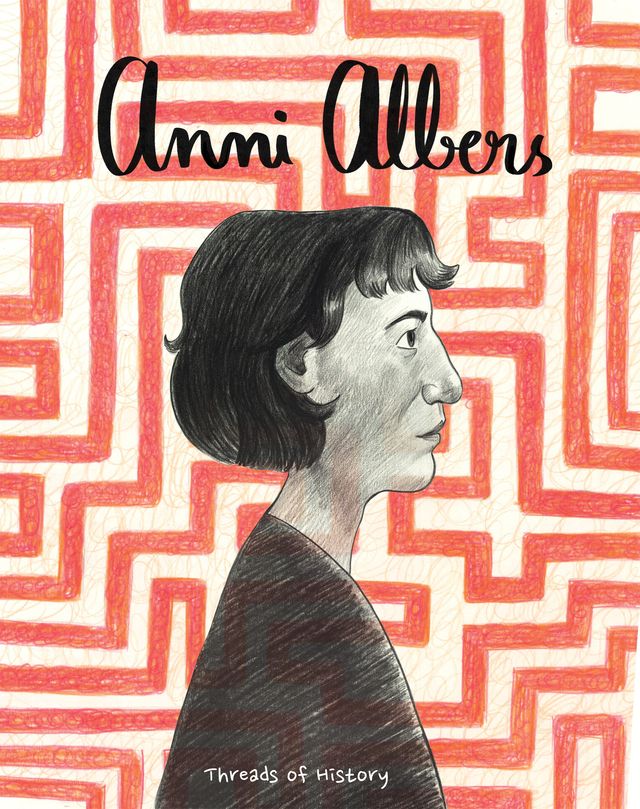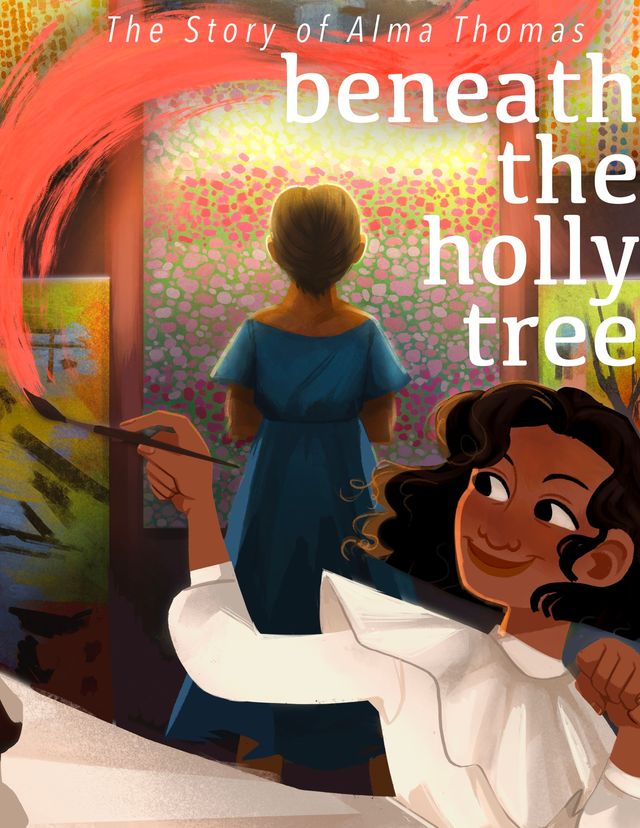An Overview
Augusta Savage fulfilled her dream of becoming an artist, winning fellowships and numerous awards throughout her life as a sculptor. Besides her own success, Savage dedicated her career in creating opportunities for Black artists.
This comic is part of a series Drawn to Art: Tales of Inspiring Women Artists that illuminates the stories of women artists in the collection of the Smithsonian American Art Museum. Inspired by graphic novels, these short takes on artists’ lives were each drawn by a student-illustrator from the Ringling College of Art and Design.

A shoulder-up black-and-white sculpture of a woman who faces us sideways. She has an assertive look on her face: dark skin, long eyelashes, full lips, high arched eyebrows and wears a high bun on her head. The black background has an uneven texture, as if smeared with clay. The top of the page reads “Augusta Savage” and “My monument will be in their work.” This comic is illustrated in black and white.
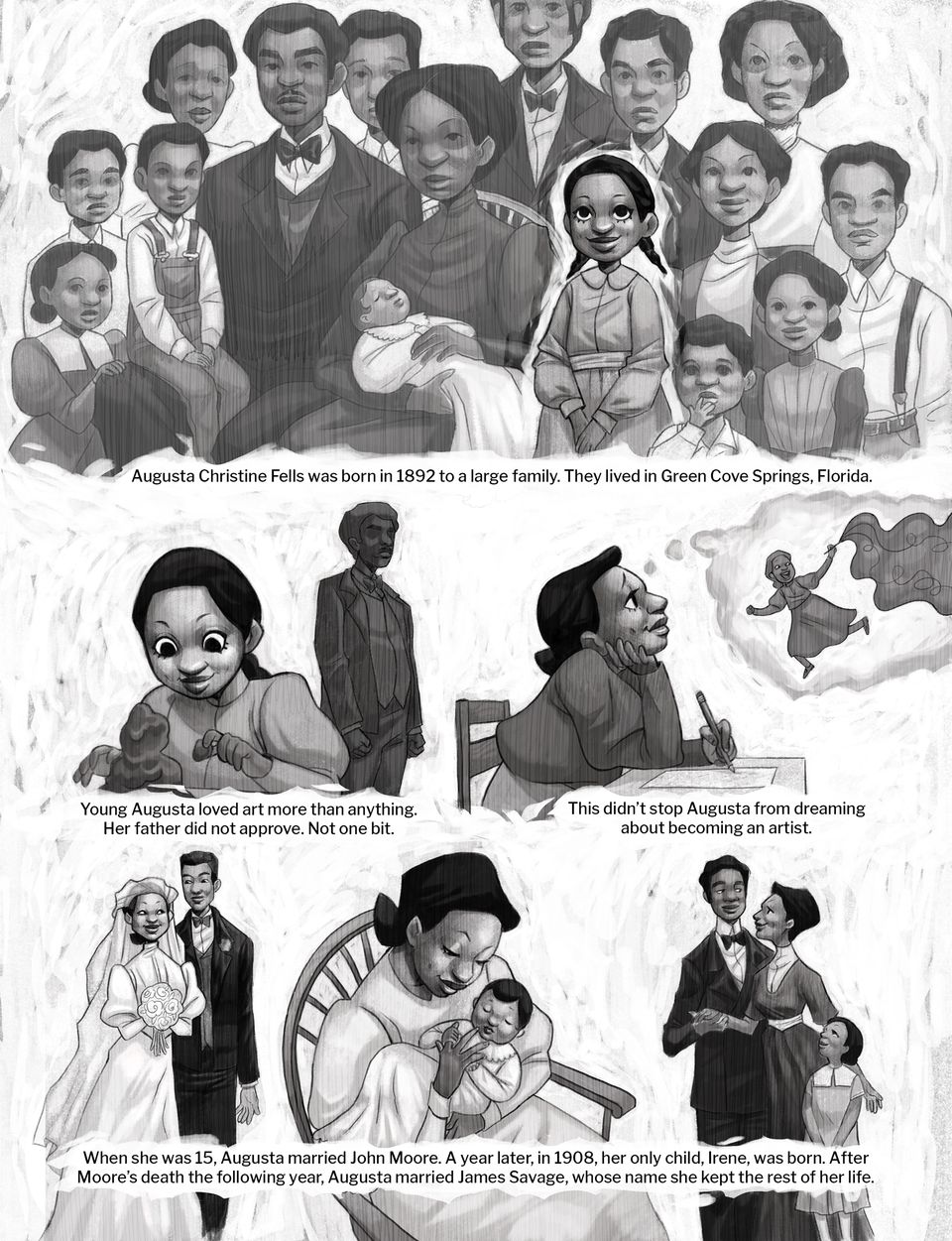
Panel 1:
A family photo with the father and mother sitting in the center surrounded by more than ten children. The family members are all dressed formally: the father wearing a black suit and bow tie, the mother wearing a dark-colored turtleneck dress, and some of the children in suits, shirts, and others in dresses. The girl standing next to her mother is emphasized, as her figure is outlined in white while the rest of the family fades into the silhouette. She wears a shirt dress with rounded collar and has two braids. She looks at us with her bright eyes and has a great smile on her face. Text below reads: “Augusta Christine Fells was born to a large family. They lived in Green Cove Springs, Florida.”
Panel 2:
A close-up of young Augusta wearing a shirt with puffy sleeves immersing herself in playing with clay. She smiles as she puts another round shaped clay to the pile of clay in front of her. Her father stands in silhouette behind her clenching his fists. Text below reads: “Young Augusta loved art more than anything. Her father did not approve. Not one bit.”
Panel 3:
Young Augusta dreamed of herself becoming an artist as she looks up from her drawing. She sits in profile, holding a pencil in her left hand and has her right hand on her chin. In her dream, as depicted in the bubble in front of her, Augusta runs with a big smile while holding a paint brush in her hand. The colors flow from the brush like clouds behind her. Bottom text reads: “This didn’t stop Augusta from dreaming about becoming an artist.”
Panel 4:
On the bottom left panel, Augusta is standing next to her groom. She is dressed in a long wedding dress with puffed sleeves and a walking length wedding veil. She holds a bunch of white flowers in front of her chest. She looks into the eyes of her groom, who looks back at her and smiles. He is wearing a black suit with a bow tie under the collar of his white shirt.
Panel 5:
In the middle panel, Augusta sits in an armchair in white dress, looking down at the baby in her arms with a benign smile. The baby is asleep while her tiny hand is holding Augusta’s finger.
Panel 6:
Augusta is standing in the center of the bottom right panel wearing a long dark colored dress with white turtleneck collar and a white belt. She looks into her husband’s eyes, who stands on her left wearing a black suit with a black bow tie. One of her hands is holding her husband’s while the other is around her daughter, who is dressed in a knee- length dress with squared flat collar.
Text across the bottom panels reads: “When she was fifteen, Augusta married John Moore. A year later, in 1908, her only child, Irene, was born. After Moore’s death the following year, Augusta married James Savage, whose name she kept the rest of her life.”
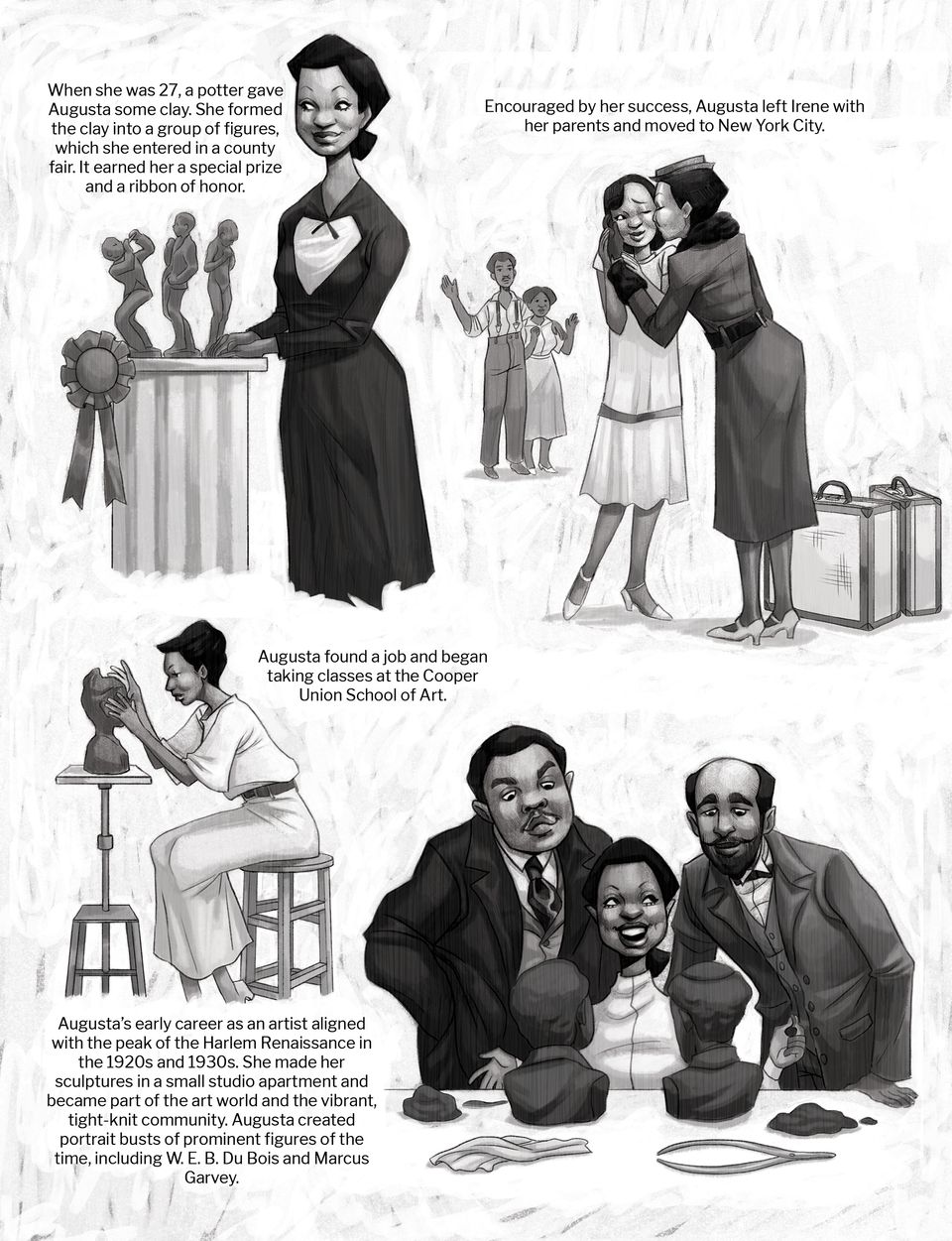
Panel 1:
Augusta stands next to a pedestal with three small sculptures on it. An award ribbon is affixed to the pedestal. She is smiling with pride. Her hair is pulled back from her face in a low bun. She is wearing a dark dress with long sleeves and a pleated skirt, and a pale panel on the front of the blouse. Text to her left reads: “When she was 27, a potter gave Augusta some clay. She formed the clay into a group of figures, which she entered in a county fair. It earned her a special prize and a ribbon of honor.”
Panel 2:
Augusta, dressed in a skirt suit and hat, holds her daughter Irene’s face in her hands as she kisses her farewell. To her right is a pair of suitcases. In the background, behind Irene, Augusta’s parents stand, waving goodbye. Text above them reads: “Encouraged by her success, Augusta left Irene with her parents and moved to New York City.”
Panel 3:
Augusta, dressed in a white blouse and pale skirt, her hair pulled back from her face in a bun, sits on a stool in front of a bust. She is sculpting the clay with both hands, as she concentrates deeply. Text above her reads: “Augusta found a job and began taking classes at the Cooper Union School of Art.
Panel 4:
Augusta sits behind a table. Two clay busts, a rag, and a caliper, and lumps of clay take up space on the table. She is smiling wide and gesturing with both her hands. Behind her two black men in suits look intently at her sculptures. To the left is a man with a round face and a thin black moustache wearing a dark suit, tie, white shirt, and light vest, he is Marcus Garvey.
To the right is W. E. B. Du Bois. He has a mustache, beard, and is bald on the top of his head. He is wearing a lighter suit, white shirt, and a bow tie. To their left, text reads: “Augusta’s early career as an artist aligned with the peak of the Harlem Renaissance in the 1920s and 1930s. She made her sculptures in a small studio apartment and became part of the art world and the vibrant, tight-knit community. Augusta created portrait busts of prominent figures of the time, including W. E. B. Du Bois and Marcus Garvey.”

Panel 1:
Augusta has her hair tied back and is dressed in a white dress with her sleeves rolled up. We can see the side of her face, by which she is shouting while raising her right fist with a rolled paper in her hand. Three White men dressed in black suits stand in the background, staring at her with condescending looks. Two of them have their hands in their pockets while the other clenches his fist. Text reads: “In 1923 Augusta won a scholarship to study in Paris. However, when the admissions committee realized she was a Black woman, they told her she was not welcome. Augusta voiced her anger and disappointment at their rejection by writing articles and speaking out.”
Panel 2:
Augusta is now an assertive young woman standing in front of a group of antique buildings. She wears a mini boater hat and a shirt dress with puffy short sleeves and a thin belt. She looks up with a great smile, having one of her hands on her forehead, like a salute gesture. Text on top reads: “This didn’t keep Augusta from studying in France. She won a different scholarship to study in Paris in 1929.”
Panel 3:
The middle panel depicts Augusta at the ribbon-cutting ceremony wearing a shirt dress with a thin belt. She holds a scissors with both hands, looking down at the ribbon with a great smile as she cuts it in the center. The ribbons flutter in the air. Behind her, a crowd standing in silhouette gathers in front of the building. Text reads: “Augusta returned to New York in the middle of the Depression. She dedicated the rest of her career creating spaces and opportunities for Black artists.”
Panel 4:
On the bottom left panel, Augusta stands with a big smile, facing us sideways on the right corner of the panel. She is dressed in a long-sleeved white dress with her hair tied back. The painting on the wall beside her has an award ribbon. To her left in the background, a crowd of formally dressed men and women looks towards Augusta in awe while clapping their hands. Text above them reads: “She pushed to get the Works Progress Administration to include Black artists in its Federal Art Project. She established schools. She founded a studio. She opened a gallery. She worked as an advocate and as an influential teacher.”
Panel 5:
Augusta sits in profile in her white shirt dress and a thin dark colored belt, absorbed in creating a sculpture of an antelope. Her eyes fall on the sculpture while her hands gently adjusting the sculpture that is placed on a supporting stick. Text above her reads: “And all the while, she worked as an artist.”
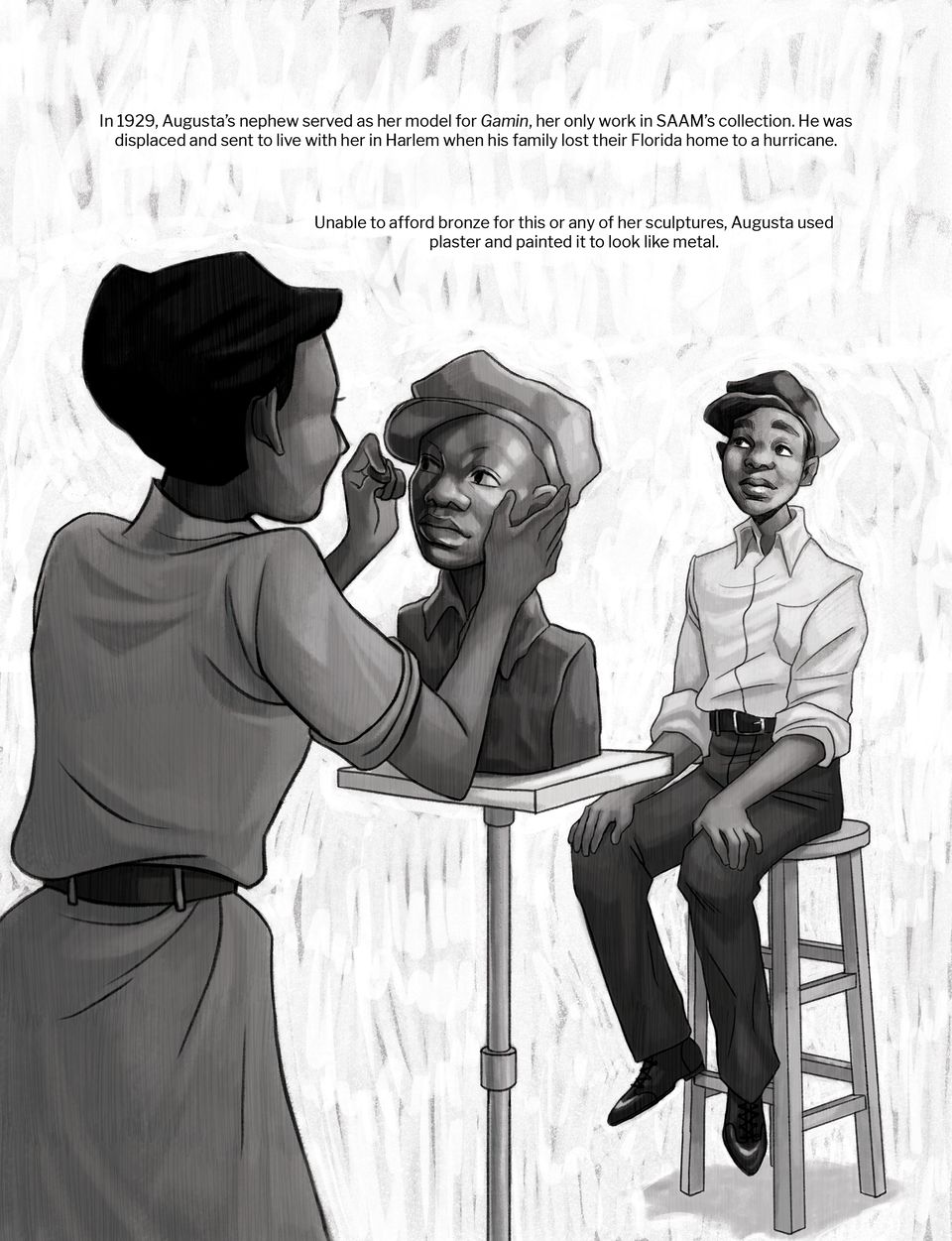
The figure of Augusta nearly fills the page, her back to us, standing in front of a sculpture in progress on a small table. Her hair is pinned up, the sleeves of her blouse are rolled up past her elbows, and her skirt is cinched with a belt. Her hands actively sculpt the bust of a boy wearing a hat. In front of her, a boy sits on a stool, modeling for her. His feet rest on the bottom rung, hands on his knees, facing Augusta. He wears a soft cap with a brim, a white shirt with the sleeves rolled up, and dark trousers and shoes.
Text above them reads: “Augusta’s nephew served as her model for Gamin, her only work in SAAM’s collection. He was displaced and sent to live with her in Harlem when his family lost their Florida home to a hurricane. Unable to afford bronze for this or any of her sculptures, Augusta used plaster, and painted it to look like metal.

Panel 1:
Augusta has her back to us as she hugs her daughter. She wears a dark colored shirt dress with a mini boater hat. Her daughter, almost as tall as her mother, faces us with a pleasant smile and closed eyes. Text reads: “After years working and teaching in New York City, Augusta moved to the Catskill Mountains, reuniting with her daughter, Irene.” Another text below reads: “She taught children in local summer camps, and sculpted portrait busts of tourists.” On the right of the upper panel, we see a shoulder-up sculpture of a woman with high bun looking at us solemnly.
Panel 2:
Augusta is now in her middle age; she stands on the right side of the panel in a white dress with butterfly sleeves and dark colored belt. Beside her, a young male student sits in front of a drawing board. Augusta puts one hand on his back while with her other hand, points at his drawing, and looks at the student with a satisfying smile. Four other students sit around them, concentrating on their drawing behind the drawing boards. Quote from Augusta reads: “I have created nothing really beautiful, really lasting, but if I can inspire one of these youngsters to develop the talent I know they possess, then my monument will be in their work.”
Panel 3:
Augusta stands in the center of the panel in dark colored long dress and her hair tied back. She has a big smile on her face and holds hand with her student in shirt and sweater on the left, who looks back at her with a smile. Her right hand holds hand with a woman in white long dress, who has an award ribbon in her other hand. The crowd stand behind them with smiles as they look in Augusta’s direction. Some of them dressed in suits and ties, others in shirts and long dresses, together standing in a ‘V’ shape. Text below reads: “She spent her life creating and sharing her love of art with others, working to ensure her communities had access to art education.”
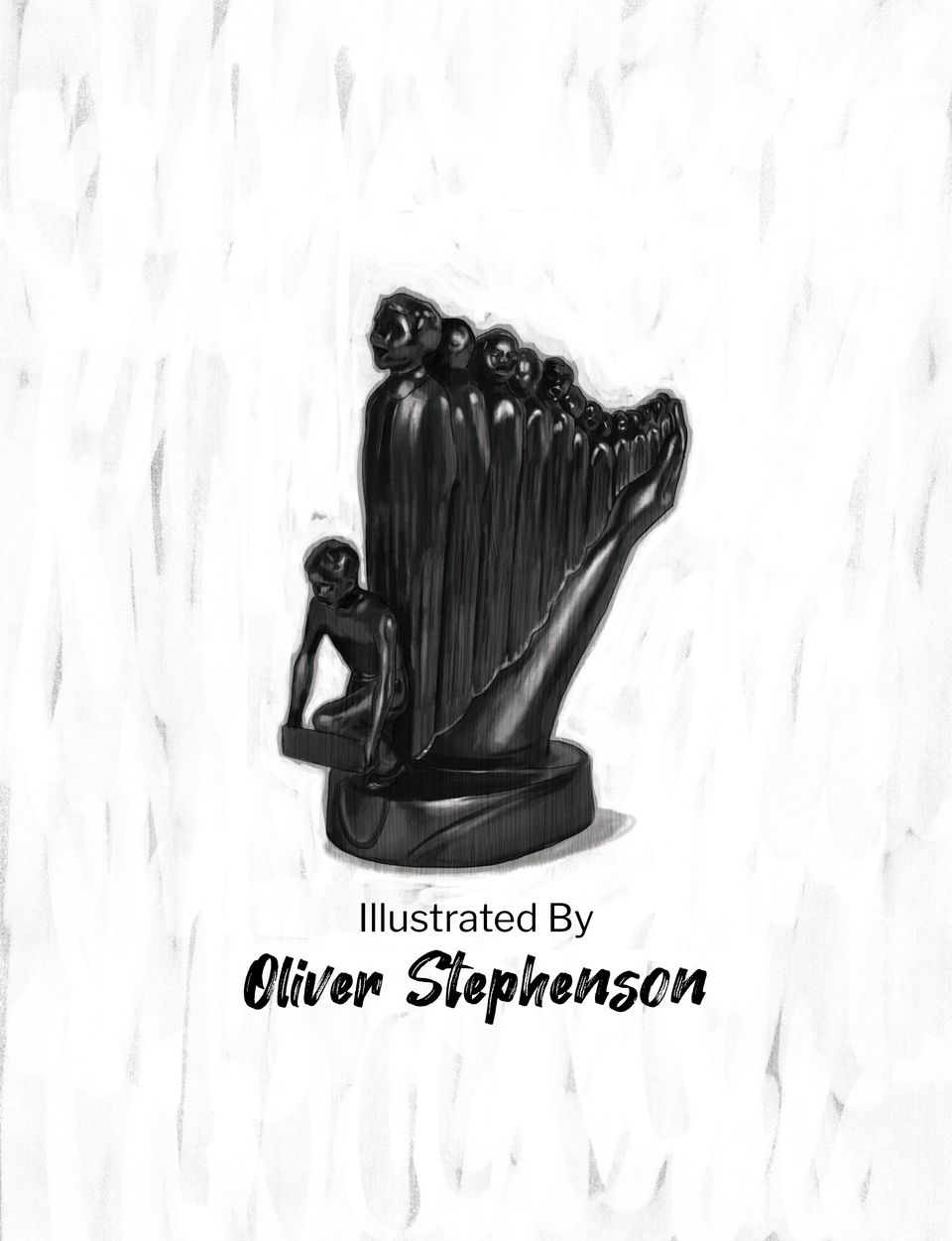
An illustration of Augusta’s sculpture on an unevenly colored white background, like carved wood surface. Light reflects from the sculpture suggests a smooth texture. The sculpture is of a harp, but with the strings replaced by people standing in line. The first person in the line kneels down holding a block with both hands. An arm rises up from the bottom supporting the line in a diagonal shape. Below are the words: “Illustrated by Oliver Stephenson”














